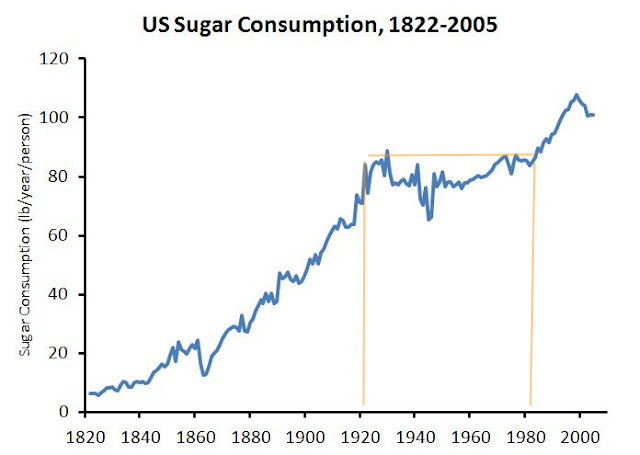What do Thomas Edison & Alexander Graham Bell have in common?
No they weren’t rats.
They were both diagnosed with diabetes after conducting electrical experiments.
John Rollo wrote the first book on diabetes in 1798 and had only seen three cases himself in the twenty-three years he practiced medicine.
In 1876, many practitioners such as Benjamin Richardson considered diabetes to be “a modern disease caused by exhaustion from mental overwork or by some shock to the nervous system. Yet it was still uncommon.” [i] [ii]
How did diabetes come to be one of society’s greatest killers?
Let’s play the Blame Game.
Sugar is only one of the culprits and fails to explain why diabetes is becoming increasingly prevalent.
Even after sugar consumption did not rise at all between 1922-1984, rates of diabetes skyrocketed tenfold.[iii]
The following excerpt is paraphrased from The Invisible Rainbow, a highly-recommended read by Arthur Firstenberg:
The American Indians have been called “genetically predisposed” to diabetes. We’re told that this predisposition is triggered by a sedentary lifestyle of living on the reservation.
This is compounded by the fact that they eat fry bread made with white flour and sugar.
However, Indians have been eating fry bread as a staple since the late 1800s, and diabetes did not exist among them until 1950.
In 1950, the first electric service came to Standing Rock in the Dakotas, along with others including the Gila River Reservation, whose inhabitants were revealed in a study conducted by the US Indian Health Service to have 380 cases of diabetes per 1000.
Bhutan, an isolated community in the Himalayas that abides by its traditional culture and ancestral foods to this day, serves as another salient example.
Bhutan had some of the healthiest people in the world, with little disease.
There was no electrification in most of the country, until 2002, when the Bhutan Power Corporation was launched. In 2004, 634 new cases of diabetes were reported in Bhutan. In 2007 there were 2,541 cases with 15 deaths.[iv]
The rise in mortality and illness was even blamed on the Bhutanese diet, one that they had followed for thousands of years.
Obesity as a Symptom
Before the 1900s, diabetics were also not overweight. Today, most are overweight due to their cells’ reduced ability to metabolize fats. Impairment of fat metabolism is a sign that the engines of our cells, the mitochondria, aren’t working efficiently.
Mitochondria are disturbed by electromagnetic fields, as the enzyme activity is slower, and cells cannot breakdown or metabolize food efficiently.
In 2010, Harvard, along with the University of Massachusetts and Joslin Diabetes Center, published a review of the role of mitochondria in diabetes, and concluded that there was a “failure of mitochondria to adapt to higher cellular demands.”
How Does Radiation Effect our Blood Sugar?
During the Cold War, the Joint Publications Research Service translated foreign
Keep reading with a 7-day free trial
Subscribe to The Power Couple by Roman Shapoval to keep reading this post and get 7 days of free access to the full post archives.






